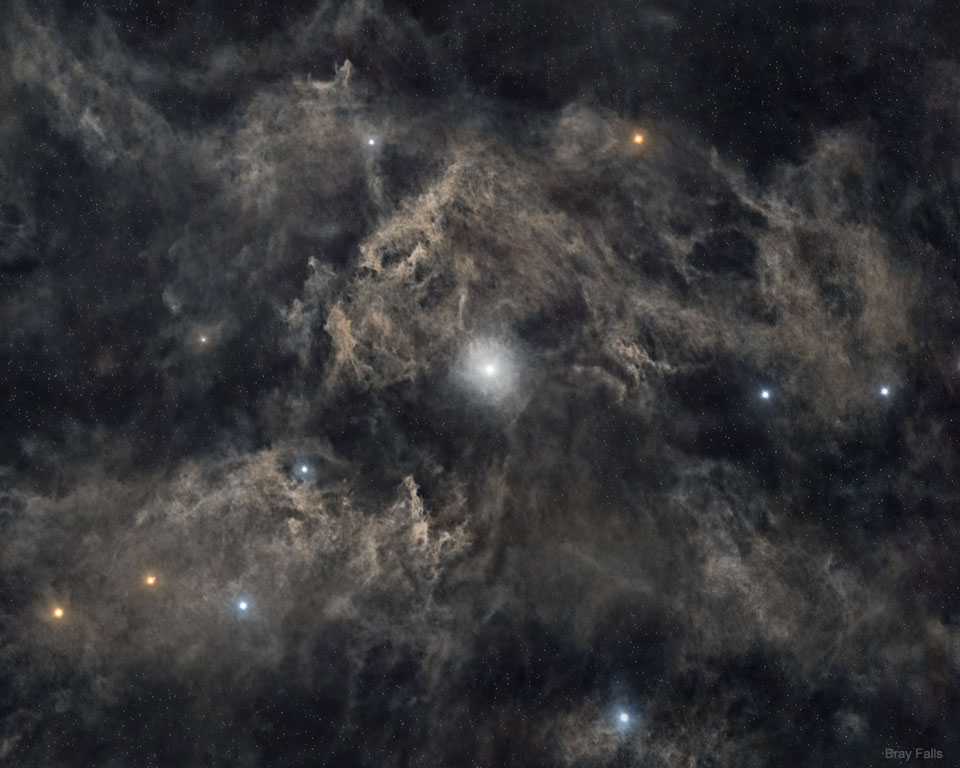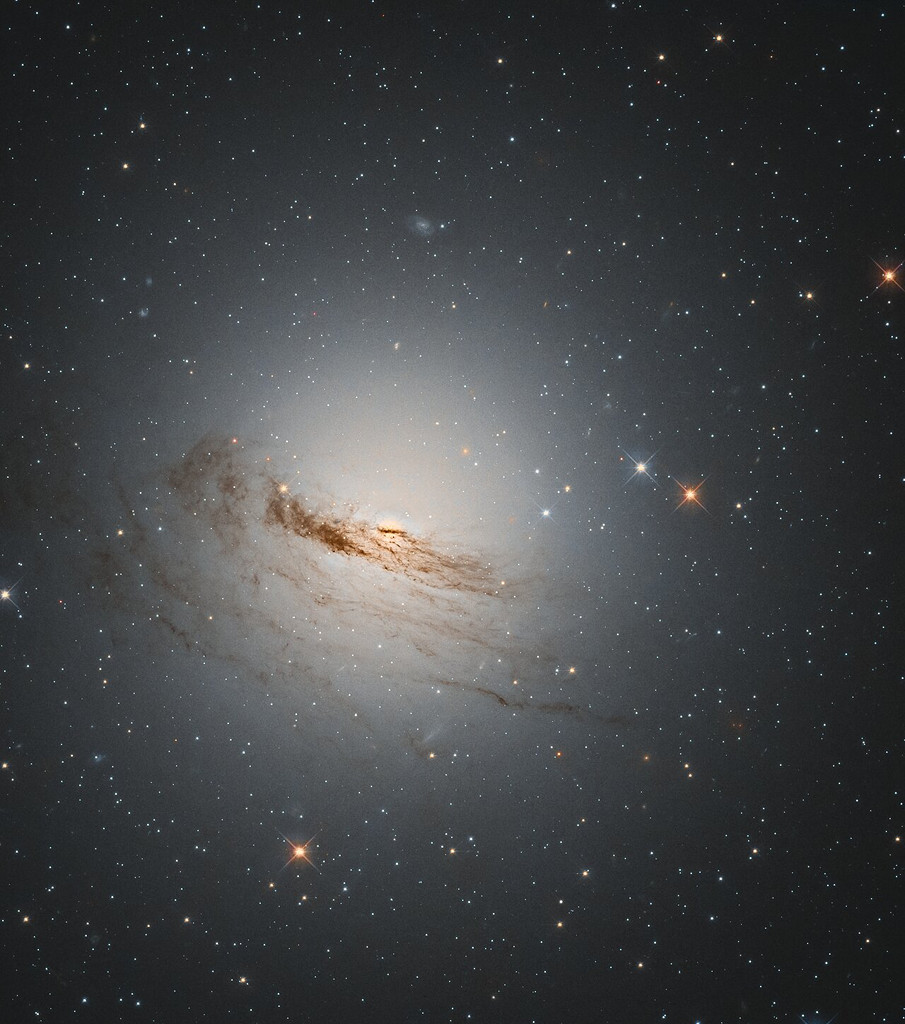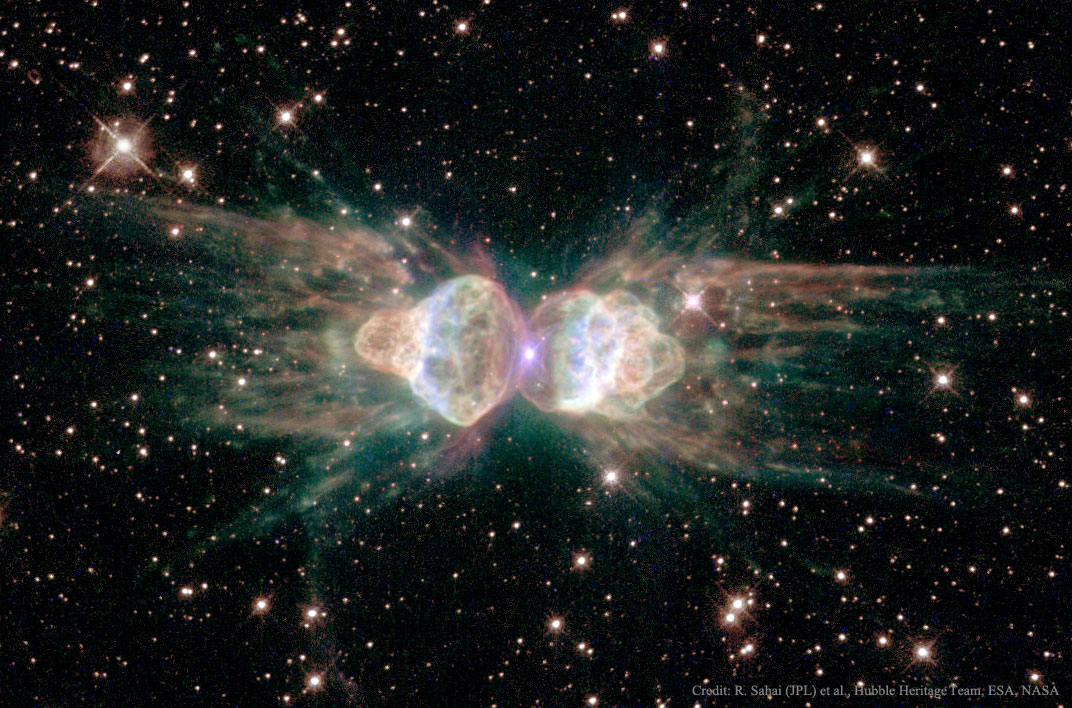Nombre total de pages vues
30/04/2021
AERONAUTIQUE - L'avion automatique
29/04/2021
ASTRONOMY - Apollo 17: The Crescent Earth
2021 April 29
Image Credit: Apollo 17, NASA; Restoration - Toby Ord
Explanation: Our fair planet sports a curved, sunlit crescent against the black backdrop of space in this stunning photograph. From the unfamiliar perspective, the Earth is small and, like a telescopic image of a distant planet, the entire horizon is completely within the field of view. Enjoyed by crews on board the International Space Station, only much closer views of the planet are possible from low Earth orbit. Orbiting the planet once every 90 minutes, a spectacle of clouds, oceans, and continents scrolls beneath them with the partial arc of the planet's edge in the distance. But this digitally restored image presents a view so far only achieved by 24 humans, Apollo astronauts who traveled to the Moon and back again between 1968 and 1972. The original photograph, AS17-152-23420, was taken by the homeward bound crew of Apollo 17, on December 17, 1972. For now it's the last picture of Earth from this planetary perspective taken by human hands.
28/04/2021
PRATIQUE/POURQUOI - Pourquoi n'utilise-t-on pas les volcans comme incinérateurs d'ordures ?
ASTRONOMY - North Star: Polaris and Surrounding Dust
2021 April 28
Image Credit & Copyright: Bray Falls
Explanation: Why is Polaris called the North Star? First, Polaris is the nearest bright star toward the north spin axis of the Earth. Therefore, as the Earth turns, stars appear to revolve around Polaris, but Polaris itself always stays in the same northerly direction -- making it the North Star. Since no bright star is near the south spin axis of the Earth, there is currently no South Star. Thousands of years ago, Earth's spin axis pointed in a slightly different direction so that Vega was the North Star. Although Polaris is not the brightest star on the sky, it is easily located because it is nearly aligned with two stars in the cup of the Big Dipper. Polaris is near the center of the eight-degree wide featured image, an image that has been digitally manipulated to suppress surrounding dim stars but accentuate the faint gas and dust of the Intergalactic Flux Nebula (IFN). The surface of Cepheid Polaris slowly pulsates, causing the star to change its brightness by a few percent over the course of a few days.
27/04/2021
ASTRONOMY - Animation: Black Hole Destroys Star
2021 April 27
Video Illustration Credit: DESY, Science Communication Lab
Explanation: What happens if a star gets too close to a black hole? The black hole can rip it apart -- but how? It's not the high gravitational attraction itself that's the problem -- it's the difference in gravitational pull across the star that creates the destruction. In the featured animated video illustrating this disintegration, you first see a star approaching the black hole. Increasing in orbital speed, the star's outer atmosphere is ripped away during closest approach. Much of the star's atmosphere disperses into deep space, but some continues to orbit the black hole and forms an accretion disk. The animation then takes you into the accretion disk while looking toward the black hole. Including the strange visual effects of gravitational lensing, you can even see the far side of the disk. Finally, you look along one of the jets being expelled along the spin axis. Theoretical models indicate that these jets not only expel energetic gas, but create energetic neutrinos -- one of which may have been seen recently on Earth.
26/04/2021
PRATIQUE/POURQUOI - Pourquoi l'électricité peut-elle tuer ?
Une décharge électrique peut tuer de trois façons: brûlure, asphyxie et arrêt cardiaque. Bien que notre corps produise lui-même naturellement de l'électricité pour commander ses fonctions vitales, une trop forte intensité de courant perturbe le système. Dès 20 milliampères les muscles se contractent, risquant ainsi à bloquer la respiration: c'est l'asphyxie. Entre 100 et 300 milliampères le coeur s'emballe, de petites contractions rapides apparaissent: c'est la fibrillation, aux effets souvent irréversibles et quelquefois fatals. Soumis à des courants plus forts, le coeur ne fibrille pas mais la résistance électrique du corps s'opposant à la circulation électrique échauffe les tissus et brûle les organes.
MINERAUX - La marcassite, une cousine de la pyrite
ASTRONOMY - Threads of NGC 1947
2021 April 26
Image Credit: ESA/Hubble & NASA, D. Rosario; Acknowledgment: L. Shatz
Explanation: Found in far southern skies, deep within the boundaries of the constellation Dorado, NGC 1947 is some 40 million light-years away. In silhouette against starlight, obscuring lanes of cosmic dust thread across the peculiar galaxy's bright central regions. Unlike the rotation of stars, gas, and dust tracing the arms of spiral galaxies, the motions of dust and gas don't follow the motions of stars in NGC 1947 though. Their more complicated disconnected motion suggest this galaxy's visible threads of dust and gas may have come from a donor galaxy, accreted by NGC 1947 during the last 3 billion years or so of the peculiar galaxy's evolution. With spiky foreground Milky Way stars and even more distant background galaxies scattered through the frame, this sharp Hubble image spans about 25,000 light-years near the center of NGC 1947.
25/04/2021
ASTRONOMY - Planetary Nebula Mz3: The Ant Nebula
2021 April 25
Image Credit: R. Sahai (JPL) et al., Hubble Heritage Team, ESA, NASA
Explanation: Why isn't this ant a big sphere? Planetary nebula Mz3 is being cast off by a star similar to our Sun that is, surely, round. Why then would the gas that is streaming away create an ant-shaped nebula that is distinctly not round? Clues might include the high 1000-kilometer per second speed of the expelled gas, the light-year long length of the structure, and the magnetism of the star featured here at the nebula's center. One possible answer is that Mz3 is hiding a second, dimmer star that orbits close in to the bright star. A competing hypothesis holds that the central star's own spin and magnetic field are channeling the gas. Since the central star appears to be so similar to our own Sun, astronomers hope that increased understanding of the history of this giant space ant can provide useful insight into the likely future of our own Sun and Earth.
23/04/2021
ASTRONOMY - Flying Over the Earth at Night II
2021 April 23
Video Credit: NASA, Gateway to Astronaut Photography, ISS Expedition 53; Music: The Low Seas (The 126ers)
Explanation: Recorded during 2017, timelapse sequences from the International Space Station are compiled in this serene video of planet Earth at Night. Fans of low Earth orbit can start by enjoying the view as green and red aurora borealis slather up the sky. The night scene tracks from northwest to southeast across North America, toward the Gulf of Mexico and the Florida coast. A second sequence follows European city lights, crosses the Mediterranean Sea, and passes over a bright Nile river in northern Africa. Seen from the orbital outpost, erratic flashes of lightning appear in thunder storms below and stars rise above the planet's curved horizon through a faint atmospheric airglow. Of course, from home you can always check out the vital signs of Planet Earth Now.
ASTRONOMY - Globular Cluster M15 Deep Field
2025 November 26 Globular Cluster M15 Deep Field Image Credit & Copyright: Alvaro Ibanez Perez Explanation: Stars, like bees, swarm a...

-
2022 September 26 All the Water on Planet Earth Illustration Credit: Jack Cook, Adam Nieman, Woods Hole Oceanographic Institution ; Data ...
-
2025 May 11 The Surface of Venus from Venera 14 Image Credit: Soviet Planetary Exploration Program , Venera 14 ; Processing & Copyri...






